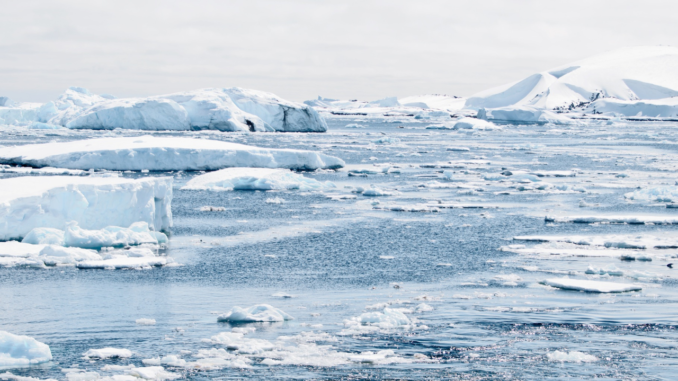
The article “Tipping point in ice-sheet grounding-zone melting due to ocean water intrusion” was published in Nature Geoscience.
The missing piece of the puzzle
Ice sheet models under predict how much ice is currently being lost from the world’s major ice sheets, in Greenland and Antarctica. They also struggle to reproduce how much ice must have been lost from these regions during past periods when the Earth was much warmer than it is today.
This suggests that ice sheet models are missing some important physics, which can explain the differences between what we see happening and what we can simulate. What happens in a region of the ice sheet called the ‘grounding zone’ might be the missing piece of the puzzle. The grounding zone of ice sheet is the region connecting ice sitting on top of bedrock to that floating on top of the ocean. It is a dynamic region, where relatively warm water from the ocean meets cold meltwater from beneath the ice sheet.

Because the ocean water is more dense, it can intrude beneath the ice sheet in the grounding zone, melting the ice sheet from beneath. The amount of sea level rise from ice sheets is very sensitive to the distance this water can intrude, making it very interesting to researchers.
An important feedback
Using models of grounding zones, researchers have previously shown that water can intrude kilometres underneath ice sheets. But these models did not include an important feedback between the shape of the grounding zone and how much melting can take place. We showed that with this feedback, grounding zones are much more sensitive to intrusion.
In particular, we found that there is a switch in behaviour — or tipping point — that can be passed as the ocean warms. Beyond this tipping point, the amount of melting taking place beneath the ice sheet increases dramatically. This means that ice sheet models might be more sensitive to ocean warming, which is expected as greenhouse gas emissions increase.
Vulnerable glaciers
No glacier is safe from this process: any glacier exposed to warm enough water will experience this dramatic feedback. For any value of F (a number describing the behaviour of flow in the grounding zone ), there is a value of M (a number describing the ocean temperature) above which there is a switch between short and long intrusions.

We mapped out which glaciers in Antarctica might be vulnerable to this process. We are only able to consider their relative risk, i.e. which are more vulnerable than others. Our modelling suggests that Pine Island is highly susceptible to this process, but Thwaites less so.
Our best current projections of sea-level rise do not include this mechanism. This means that future sea-level rise from the Antarctic and Greenland ice sheets may be much higher than we think.


Leave a Reply